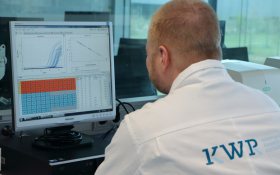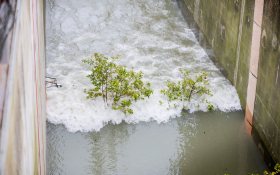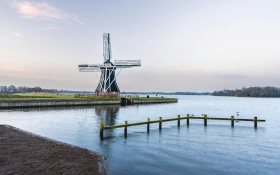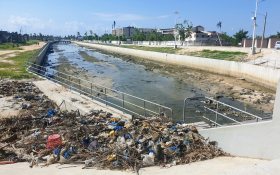EColoRO and ISPT take lead in European demo project for wastewater reuse in textile industry
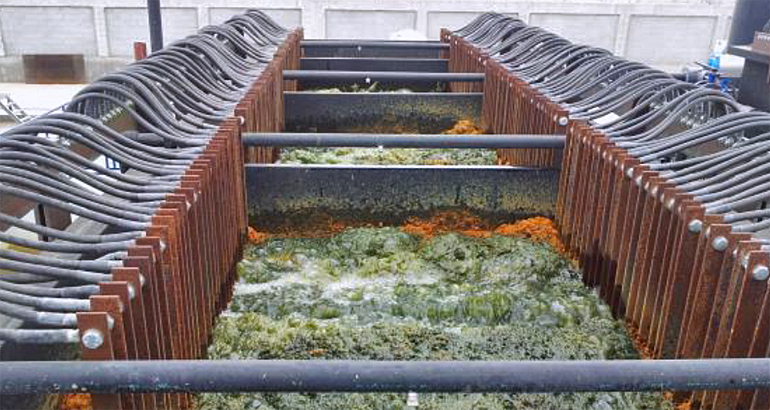
A European consortium led by EColoRO and Institute for Sustainable Process Technology (ISPT) will commence a 3,5-year project to demonstrate a new electrocoagulation wastewater treatment technology at full industrial scale, first at a textile mill in Belgium and later at a textile mill in Italy.
The remaining consortium members are a Belgian textile mill, Belgian VITO institute for technology research, Czech company Inotex, Dutch company Morselt Borne, and the European Apparel and Textile Confederation.
The project is part of Europe’s Horizon 2020 research program and has a budget of 4,8 million euro. The official start is on the first of June 2015.
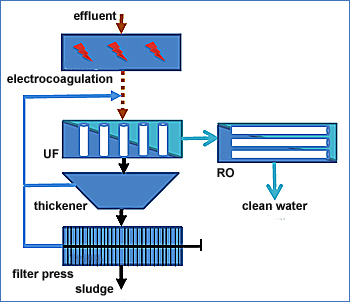 Removal of dyes and pigments
Removal of dyes and pigments
Textile dyeing and finishing processes traditionally consumes significant amounts of water. Fabric is usually run through a dye bath to color it, followed by several rounds of rinsing to remove any dye that has not bonded with the fabric.
The rinse water contains reactive pigments and toxic chemicals that are difficult to remove, thus limiting the possibility of water reuse.
EColoRO developed a new technology based on electrocoagulation that enables the removal of 93 to 96 percent of the dyes and pigments in textile wastewater. Membranes can then be used to fully purify the water via ultrafiltration or reverse osmosis.
As a result, up to 90 percent of the water can be reused. About 10 percent will be lost due to concentrated waste stream or escapes via evaporation.
This enables textile mills to reduce fresh water consumption, and at the same time lower their wastewater treatment costs.
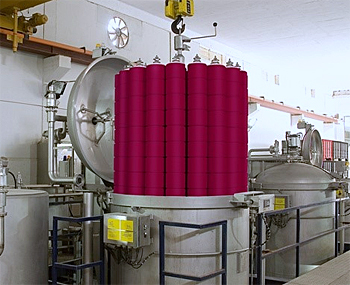 Payback in two years
Payback in two years
"This is an example of an environmental solution with a huge impact that generates money rather than costing money,” Eric van Sonsbeek, EColoRO’s director and cofounder says. He estimates that European textile mills will earn back their investment in two to four years.
"The EColoRO concept is an excellent alternative to existing energy-intensive wastewater treatment techniques,” says Tjeerd Jongsma, ISPT’s director. "The new technology is also a godsend for textile mills in water-deficient areas in Europe and other places where the provision of drinking water is a growing problem. It also aligns with the industry’s desire to increase the use of energy from renewable resources, in this case the use of renewable electricity to treat and reuse large quantities of process wastewater.”
In addition to demonstrating the EColoRO concept, within the consortium Inotex will investigate how textile mills can make optimal use of the treated water and VITO will look at ways to reuse the pigment- and iron-rich slurry generated by the purification process.
About EColoRO
EColoRO Water Treatment Solutions works with customers around the world to design and implement innovative water purification solutions. The company’s main focus is on reusing wastewater streams in order to decrease operational costs and reduce environmental pollution.
About ISPT
The Institute for Sustainable Process Technology is a collaboration between industry, universities, and knowledge institutes that works to accelerate innovation processes and make them more efficient than they are at present. In addition to fostering the generation and exchange of knowledge, the institute aids the development, demonstration and application of breakthrough technology with a special focus on process technology.
This news item was originally published on the website of Institute for Sustainable Process Technology.
More information
EColoRO
Hilversum, the Netherlands
+31 35 369 0 363
www.ecoloro.nl
Institute for Sustainable Process Technology (ISPT)
Amersfoort, the Netherlands
+31 33 700 9797
www.ispt.eu
